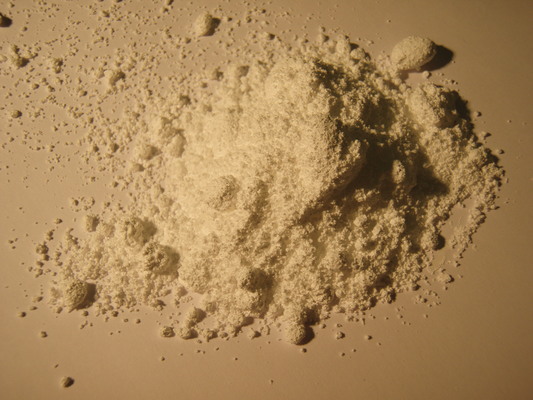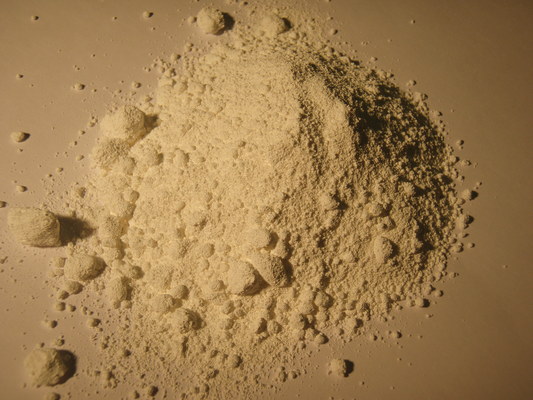White
On this page is information about white colours. These are:
Flake White / White Lead

Use - Paint pigment.
Formula - 2PbCO3 • PbH2O2
Chemical Name - n/a
Structure - n/a
Synthesis - Simultaneous reaction of a metallic lead grit with carbonic acid, atmospheric oxygen and water vapour.
Interesting Facts - Originally made from lead and vinegar it was used as a cosmetic face powder from around 400BC. It is very toxic by inhalation, and is banned from sale in the EU. White lead turns black over time when mixed with water.
Baryta White / Permanent White

Use - Paint pigment.
Formula - BaSO4
Chemical Name - Barium sulfate
Structure - Orthorhombic
Synthesis - Mix cold solutions of barium chloride and dilute sulfuric acid and was with cold water. The precipiate should be kept under warm water.
Interesting Facts - Used as a paint.
Titanium Dioxide

Use - Paint pigment and used in sun cream.
Formula - TiO2
Chemical Name - Titanium dioxide
Structure - Orthorhombic
Synthesis - Occurs in the mineral rutile.
Interesting Facts - Also used in cosmetics. Titanium dioxide absorbs ultra violet light and so is ideal for use in sun screens. It is non-toxic and very widely used.
Gypsum

Use - Paint pigment
Formula - CaSO4 • 2H2O
Chemical Name - Calcium sulfate dihydrate
Structure - Monoclinic
Synthesis - Mined from the gypsum mineral. Main constituent of Alabaster, a prized stone used for caving.
Interesting Facts - Also used in plasterboard.
Chalk


Use - Paint pigment
Formula - CaCO3
Chemical Name - Calcium carbonate
Structure - Orthorhombic
Synthesis - Formed over millions of years from dead sea creatures, and mined as sedimentry rock.
Interesting Facts - Used for writing on blackboards. Calcium carbonate is used to make lime, cerment, putty, plaster and mortar. It is used by gymnasts and climbers on their hands to give them grip. It was also sold as hard cheese in wales in the 14th century to unsuspecting customers. Hence the term 'like chalk and cheese'.






